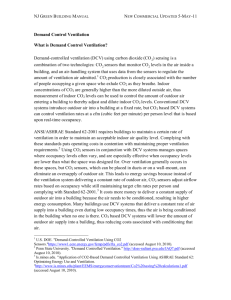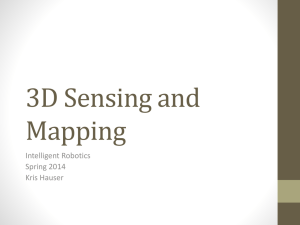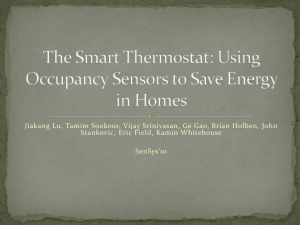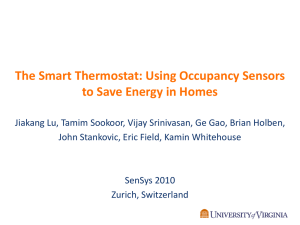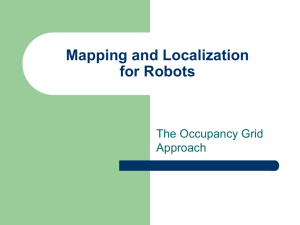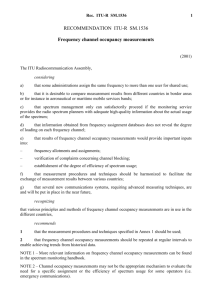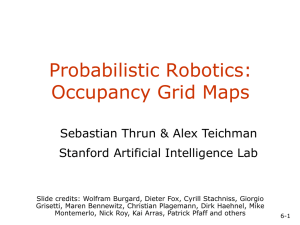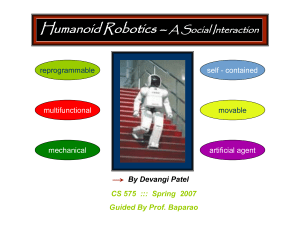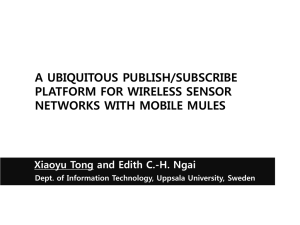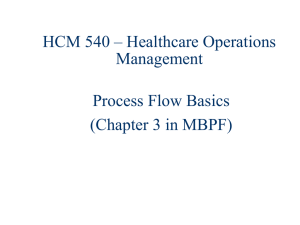GBOMRTues230TestoniCHESC2011
advertisement
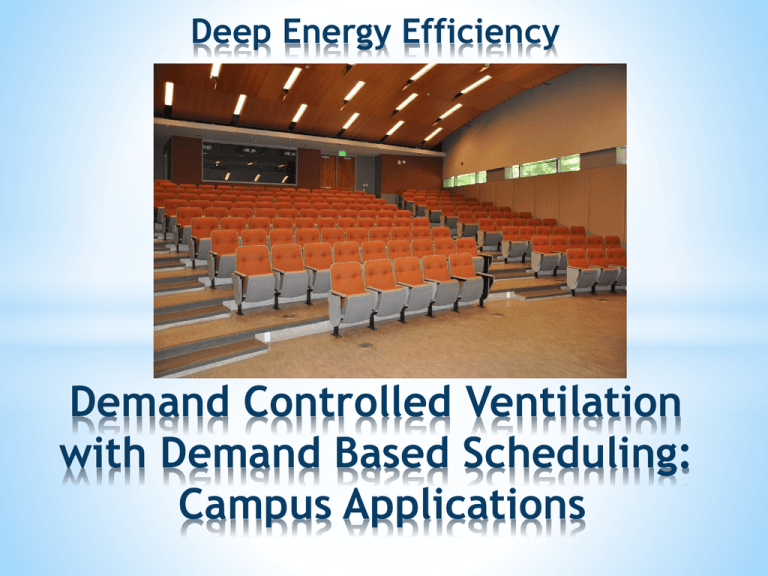
Deep Energy Efficiency Demand Controlled Ventilation with Demand Based Scheduling: Campus Applications Controlling the amount of ventilation to a space based on demand Reset based on occupancy: Use carbon dioxide sensors to track space CO2 levels and raise lower supply fan airflow to maintain <700ppm Reset based on economizer operation: Lower supply fan airflow based on percentage of outside air in supply air mix Occupancy sensors Determine physical presence of people CO2 sensors Determine quality of air in space Located in return air duct or in conditioned space Temperature sensors Determine whether space needs to be cooled/heated Variable Speed Drives Allow a proportional rate of airflow to space based on demand Control Equipment Use sensors to determine space need and operate equipment efficiently Graphical building control system Effective sequence of operation Buildings designed before 2001 Large spaces with dedicated air handling units High operating hours/Low usage/Dense occupancy Spaces that have wide weekly operating schedules and highly variable actual usage Performance spaces Art/Music Studios Lecture halls Large Classrooms Auditoriums Computer Labs Multi-purpose Rooms Dining Areas Problem: UCSC facility staff were aware of building equipment that was running when spaces were not occupied Holidays Class scheduling changes and reductions to spaces Faculty / Researchers demanded spaces be accessible during a wide range of hours Legacy building control systems could not be modified quickly and easily Solution: Demand Based Scheduling Retrofit legacy BMS controllers Install Occupancy and CO2 sensors If CO2 levels are below setpoint And temperature is within desired range And occupancy sensors indicate empty space Shut off equipment Turning OFF air handling equipment when CO2 levels are below 700ppm AND Space is unoccupied AND Temperature of space is between 64-80 deg F Occupied Mode: regular building occupancy scheduled hours. Occupancy sensors sense space occupancy. Equipment ON Unoccupied Mode: regular building unoccupied schedule hours. Equipment OFF Standby Mode: regular building occupied hours, space is unoccupied, CO2 and temperature is within desired range. Equipment OFF or at reduced operation Electrical Savings: Variable airflow results in exponential electrical reduction Lower equipment runtime Reduce airflow when economizer is in free cooling mode Reduced cooling from reduced volume of air to cool Reduced cooling from temperature setback (standby mode) Natural Gas Savings: Reduced heating from temperature setback Reduced heating from reduced volume of air to heat Annual Energy Savings 200,337 kWh 28.4 kW 15,062 therms Demand Controlled Ventilation Demand Based Scheduling Timer Switches on Fan Coil Units Main Stage and Second Stage Occupant wanted broad access, but actual usage of space is low 7 days/week, 8am-11pm Special Events: Theatre Performances Highly variable actual occupancy Airflow rates designed for peak capacity (performances) Performance Studios Multiple spaces with operable windows and dedicated FCUs. 7 days/week, 8am-11pm Variable actual occupancy Occupant need for conditioned air was low * Building built in 2004 Designed and constructed with DCV Trending of system determined that DCV was not operation correctly Modified sequence to include demand based scheduling Resolved over pressurization issues by reducing supply fan airflow and maintaining CO2 levels Red line shows kW profile before commissioning Blue line shows kW profile after commissioning Annual Energy Savings 73,286 kWh 17.64 kW 1,124 therms Demand Based Scheduling Zone Level DCV 1) Occupancy Sensor goes unoccupied 2) VAV goes to min position 3) Main Supply/Return fan slow down as VAVs close Exterior classroom with dedicated Air Handling Unit Weekly schedule: 530am-1100pm,7 days/week Original BMS didn’t allow for simple schedule modifications Installed occupancy sensors and changed sequence of operations June 2011: Scheduled Hours: 525 hours Actual Hours: 78 hours Reduced hours of operation by 85% Annual Energy Savings 35,066 kWh 2.4 kW DCV and Demand Based Scheduling * Implemented measures a a part of Monitored Based Commissioning Project (MBCx) * Computer lab has dedicated AHU that ran 24/7 * During academic breaks, building was open for staff but computer lab was closed * Allowed HVAC operation of computer lab during extended hours * CO2 levels trigger AHU during non-scheduled hours Sequence of operation needs to be commissioned. If too complex or mis-programmed, DCV will not be effective CO2 sensors need to be appropriately placed. If system shuts off during standby mode, CO2 sensors MUST be placed in space, not return air duct Integration of lighting and HVAC optimizes retrofit
